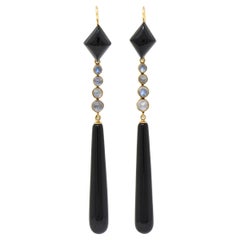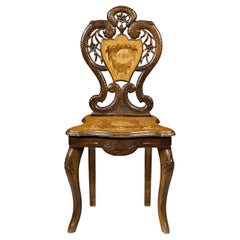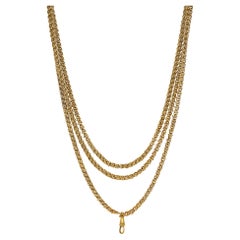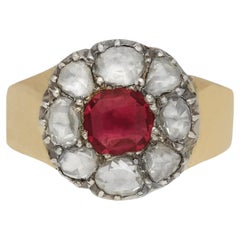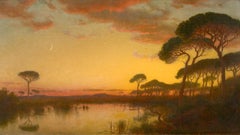Recognized Dealers
Antique 1880s Victorian Drop Earrings
Moonstone, Onyx, Gold, 14k Gold, 18k Gold, Yellow Gold
Antique Late 19th Century Swiss Chairs
Walnut
Antique 1870s Victorian Pendant Necklaces
Moonstone, Gold, 14k Gold, 18k Gold, Yellow Gold
Antique 1870s English Victorian Chain Necklaces
Gold, 15k Gold, 18k Gold
Antique 1880s English Cluster Rings
Diamond, Ruby, Yellow Gold, Silver
Late 19th Century Hudson River School Landscape Paintings
Canvas, Oil
Antique 1880s Victorian Pendant Necklaces
Diamond, Gold, Silver
Antique 1890s Late Victorian Dangle Earrings
Diamond, Emerald, Ruby, 14k Gold
Antique 1880s Victorian Band Rings
Diamond, Opal, Gold, 18k Gold, Yellow Gold
Antique 1890s Victorian Fashion Rings
Opal, Gold, 18k Gold, Yellow Gold
Antique 1880s Victorian Chain Necklaces
Gold, 18k Gold, Yellow Gold, Enamel
Antique 1880s British Late Victorian Brooches
Diamond, Sapphire, Gold
1890s Paintings
Ink, Watercolor
Antique 1890s Late Victorian Brooches
Diamond, Emerald, Enamel
Antique Late 19th Century English Late Victorian Chain Necklaces
9k Gold
Antique Late 19th Century Persian Persian Rugs
Wool
Antique Late 19th Century Persian Tribal Art
Wool
Antique Late 19th Century Caucasian Caucasian Rugs
Wool
Antique 1890s Late Victorian Dangle Earrings
Diamond, Lapis Lazuli, Gold
Antique Late 19th Century English Victorian Chain Necklaces
14k Gold
Antique 1890s Victorian Brooches
Labradorite, Gold, 14k Gold, Yellow Gold
Antique 1890s Brooches
Diamond, Ruby, Silver
Antique 1890s British Victorian Cluster Rings
Diamond, Pearl, Natural Pearl, 18k Gold, Yellow Gold, Silver
Antique 1880s French Late Victorian Brooches
Diamond, 18k Gold
Antique Late 19th Century British Victorian Brooches
Diamond, Emerald, Ruby, Sapphire, Blue Sapphire, 18k Gold, Silver
Antique 1880s French Egyptian Revival Brooches
Diamond, Enamel, 18k Gold
Antique Late 19th Century British Victorian Brooches
Pearl, Natural Pearl, Turquoise, Gold, Yellow Gold
Antique Late 19th Century British Late Victorian Chain Bracelets
Diamond, Ruby, Gold, 18k Gold, Yellow Gold
Antique 1880s French Figurative Sculptures
Bronze
Antique 1890s Victorian Brooches
Diamond, White Diamond, Gold, 18k Gold, Yellow Gold
Late 19th Century Figurative Paintings
Oil, Wood Panel
Late 19th Century Figurative Paintings
Oil, Wood Panel
Antique Late 19th Century Art Nouveau Brooches
White Diamond, Garnet, 14k Gold, Yellow Gold
1880s Landscape Drawings and Watercolors
Paper, Ink, Watercolor, Graphite
Late 19th Century Figurative Paintings
Canvas, Oil
Antique 1880s Brooches
Diamond, White Diamond, Brown Diamond, Sapphire, Blue Sapphire, Gold, 18...
Antique 1880s French Link Bracelets
Yellow Gold
Antique 1880s European Paintings
Paint
Antique 1870s Italian Side Tables
Olive
Antique Late 19th Century Unknown Edwardian Engagement Rings
Diamond, Platinum
Antique 1890s Engagement Rings
Diamond, Ruby, Gold, 18k Gold, Yellow Gold
Antique 1890s Unknown Victorian Drop Earrings
Natural Pearl, Yellow Gold
Antique Late 19th Century Italian Figurative Sculptures
Marble
1890s Figurative Paintings
Canvas, Oil
Late 19th Century Figurative Paintings
Gouache
Antique Late 19th Century Persian Persian Rugs
Wool
Antique Late 19th Century Art Nouveau Brooches
White Diamond, 10k Gold, Yellow Gold
Antique 1890s Link Bracelets
Blue Sapphire, White Diamond, 18k Gold
Antique 1880s Photography
Paper
Antique 1880s English Paperweights
Metal, Silver
Antique Late 19th Century English Late Victorian Screens and Room Dividers
Mahogany, Satinwood
Antique 1890s Swedish Scandinavian Modern Armchairs
Pine
Antique Late 19th Century French Napoleon III Pedestals and Columns
Bronze
Antique 1880s Italian Brooches
18k Gold
Antique Late 19th Century Persian Persian Rugs
Wool
Late 19th Century More Art
Bronze
Antique Late 19th Century English Victorian Game Tables
Bronze
Antique Late 19th Century French Cabinets
Bronze
Antique 1870s English Toys and Dolls
Iron
Late 19th Century Figurative Drawings and Watercolors
Paper, Pastel
